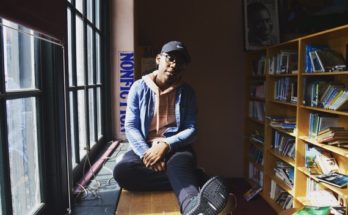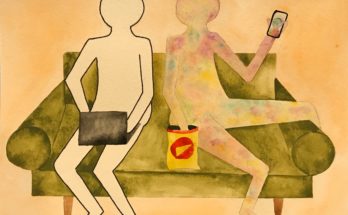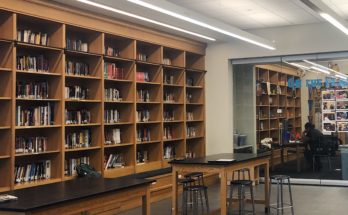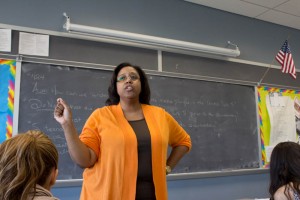
The bell rang at 11:05 a.m. on a Friday morning in February at Frank Sinatra School of the Arts, a Queens public high school for performers and artists. English teacher Taisha Matthews headed to journalism class with two students, one who does layout and the other who covers fashion for the school’s newspaper, The Bennett, named after the school’s founder, entertainer Tony Bennett.
Matthews waved the students into class, shut the door and began updating the 33 seniors on the paper’s production. Two girls glided in late, one with her hair tied in a bun. The 9th through 12th grade school in Astoria serves 781 students, all of whom audition for a place in the popular school. The girls are dancers, Matthews said, and they are always late for journalism class because their studio instructor releases them after the bell rings.
Journalism has always had trouble competing for attention among the singers, the artists, the creative performers at Frank Sinatra. Created four years ago as an English elective for seniors, the course was conceived as a way for students to learn real-world writing skills, while at the same time giving art students the opportunity to explore their art form through the design and layout of the school’s newspaper.
“I feel very lonely. There is no one for me to go to with my questions and concerns,” said Matthews. After teaching English at John Adams High School for nine years, she transferred to Frank Sinatra. In addition to teaching journalism, Matthews teaches four English classes–two for freshman, two for seniors–and serves as the adviser of the school newspaper.
Other journalism teachers in the city and the nation recognize her sense of isolation.
“Usually at any school there is the one journalism teacher and it is a very solitary experience,” said Karin Van Orman, a former journalism teacher at Ida B. Wells High School in San Francisco and a doctoral candidate at Teachers College. “Even sometimes the location of the journalism program is some dusty, dank, dark basement or a computer lab that nobody ever goes to unless they have to.”
Teachers turn to a broader online community in search of support. Resources are available from scholastic journalism and press organizations like the Journalism Education Association, NYC High School Journalism Collaborative at Baruch College; myhsj.org (My High School Journalism), set up by the American Society of Newspaper Editors (ASNE) and even the news literacy nonprofit, The News Literacy Project.
Back in Frank Sinatra High School of the Arts, Matthews finds it difficult to capture the students’ attention, particularly when a big performance is looming. There is a name for the day before a vocal, a musical or dance performance. It’s called “blackout day” at Frank Sinatra. That’s when students performing in the production are excused from classes for extra rehearsals.
Of course, some public schools in New York City have established, robust journalism programs and a bounty of resources. Brooklyn’s Edward R. Murrow High School is one example. Its school newspaper, The Murrow Network, has been published since 1974 and won “Best High School Newspaper in New York City” in 2012 from the NYC High School Journalism Collaborative. Most other journalism teachers are scrambling like Matthews, who compiles current materials from CNN or the New York Times in order to circumvent using the 1998 textbook, “Journalism Today.”
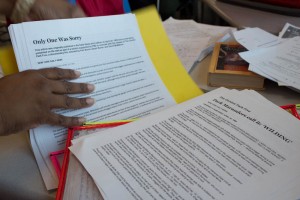
Answers vary on why journalism classes suffer chronic unpopularity. Only 132 New York City high schools out of 263 surveyed had a school newspaper or journalism program according to a 2009 study done by Brooklyn College Assistant Professor of Journalism and Education, Jessica Siegel and funded by the McCormick Tribune Foundation. Siegel is the founder of the New York City High School Journalism Program at Brooklyn College, whose mission is to strengthen high school journalism in New York City.
The problem may be a regional one. A study done at the same time as Siegel’s revealed that nationwide, 74 percent of schools had a school paper or journalism program, compared to the 50 percent she found in New York City schools, as reported by the New York Times. “Journalism has also been poorly understood and least respected in the secondary schools of the Northeastern states,” said Columbia Scholastic Press Association Executive Director, Edmund J. Sullivan, in an email. He sees the reason for this as a negative trickle down effect originating at institutions of higher education in this part of the nation. “Since the high schools took their curricular cues from the colleges, journalism was not treated as a serious course of study at either scholastic or collegiate level,” he explained.
Van Orman, who worked from 2004-2006 at Ida B. Wells, saw the problem as something born out of the traditions of English departments. “Historically within the context of English departments there has been much less of a value on this journalistic type of writing,” One of the greatest challenges journalism instructors face is illustrating just how writing, say, an essay or a report, is different from producing a journalistic piece.
Matthews confronted this tricky task head-on in a Friday morning lesson aimed at teaching her students about perspective. First, she asked her students to write about the worst day of their lives. The twist? They had to write using the third person. Students were given 10 minutes.
Once the time was up, Matthews asked for volunteers to read their work aloud. Students read stories of suicide, domestic violence, jail; some students became visibly emotional and Matthews stood by them and reassured them they were in a safe place to continue. Then she asked, “What was different about telling the story from this perspective?” The students responded by telling her that from the third person, they were able to give more detail about a situation, that it was easier to see it and describe it at a distance.
And with that, in those 10 minutes, she managed to illustrate how students could move from merely writing about something they’d experienced to reporting on it.
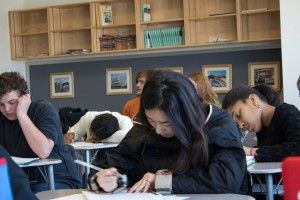
Four years into teaching journalism at Frank Sinatra, Matthews continues to improvise. She got the idea for the perspective lesson from a book on non-fiction writing and has borrowed other ideas by attending presentations by the NYC High School Journalism Collaborative.
Most recently, Matthews reached out to the News Literacy Project, a nonprofit founded by Pulitzer-prize winning journalist, Alan C. Miller. Darragh Worland, the project’s New York program manager, answered Matthews’ inquiry and met with her in the fall.
The News Literacy Project does not typically work with journalism classes, but instead partners with teachers of English, Social Studies and History to educate students on news literacy. It knows all too well the challenges teachers face when it comes to journalism: “There is no shortage or lack of lessons and curricula on the Web to teach journalism, and it is a matter of sifting through it and knowing what is a credible source,” Worland said, explaining that this was a major concern expressed by a select group of New York City teachers in a meeting with the project Feb. 22.
The project is doing something different with Matthews’ class. Her class, along with the School for Global Leaders, are the first in New York to experience the project’s digital unit. It’s a condensed version of its standard, three-week curriculum.
For five sessions in March and April, Matthews’ class received 45-minute lessons, a mix of video lessons hosted by journalists from NY1, the L.A. Times, ABC News and others, covering the four News Literacy Project pillars, which include, “Why Does News Matter?” and “Why is the First Amendment Protection of Free Speech so Vital to American Democracy?” At the end of each video lesson, students were quizzed on what they had learned. There was also a Webinar, when the students had the opportunity to partake in an hour-long discussion with a journalist. However, due to scheduling conflicts, most students could not attend the Webinar and instead will view a recording of it at the close of the unit.
Today, more than 200 journalists work with the News Literacy Project. Its New York program is primarily funded by the Charles H. Revson Foundation and thanks to that funding, the project is able to offer the program it will do at Frank Sinatra, free of charge.
Matthews is having her students write reflections about the experience. When she looks back on it, she feels like the program reinforced the journalism concepts she’s already taught her students, while also exposing them to evidence-based analysis, a focus of the new, national Common Core Standards. Perhaps journalism at Frank Sinatra and throughout the state and country will experience a renaissance of sorts because of that.
For Matthews, it’s all a learning experience. Her biggest take-away from participation in NLP: “I know it helped me with teaching the students about the first amendment, because I had no idea how to teach that.”

